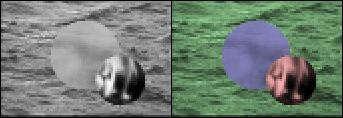
| Home | People | Research | Publications | Demos |
| News | Jobs |
Prospective
Students |
About | Internal |

| Layered Dynamic Textures | |

|
|
|
Traditional motion representations, based on optical flow, are inherently local and have significant difficulties when faced with aperture problems and noise. The classical solution to this problem is to regularize the optical flow field, but this introduces undesirable smoothing across motion edges or regions where the motion is, by definition, not smooth (e.g. vegetation in outdoors scenes). It also does not provide any information about the objects that compose the scene, although the optical flow field could be subsequently used for motion segmentation. More recently, there have been various attempts to model videos as a superposition of layers subject to homogeneous motion. While layered representations exhibited significant promise in terms of combining the advantages of regularization (use of global cues to determine local motion) with the flexibility of local representations (little undue smoothing), and a truly object-based representation, this potential has so far not fully materialized. One of the main limitations is their dependence on parametric motion models, such as affine transforms, which assume a piece-wise planar world that rarely holds in practice. In fact, layers are usually formulated as "cardboard" models of the world that are warped by such transformations and then stitched to form the frames in a video stream. This severely limits the types of videos that can be synthesized: while the concept of layering showed most promise for the representation of scenes composed of ensembles of objects subject to homogeneous motion (e.g. leaves blowing in the wind, a flock of birds, a picket fence, or highway traffic), very little progress has so far been demonstrated in actually modeling such scenes.
Recently, there has been more success in modeling complex scenes as
In this work, we address this limitation by introducing a new generative
model for videos, which we denote by the
|
|
| Selected Publications: |
|
| Demos/ Results: |
|
| Databases: |
|
| Contact: | Antoni Chan, Nuno Vasconcelos |
![]()
©
SVCL